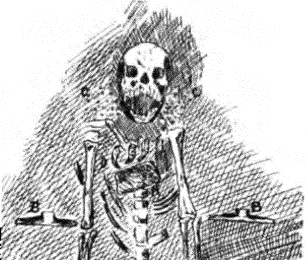<![CDATA[A burial site that was excavated in a remote location in Lochaber, Scotland has come under international scrutiny because of the fact that archaeologists have managed to uncover the remains of a person who is said to have died almost 3600 years back. This makes the body, which was curled up in a fetal position and dates back to about 1650BC, one of the oldest skeletons to have been uncovered. It hasn’t been estimated whether the skeleton belonged to a man or a woman as of yet, but the discovery has gained immense importance. John Robb, a professor at the Cambridge University, and his team who are collectively known as the Ardnamurchan Transitions team began excavating the area which they had termed as Ricky’s Cairn in Swordle in the year 2010. This is the same team that had uncovered the Viking Boat Burial at the Swordle Bay in the year 2011, parts of which are already on display at the world famous British Museum. According to Jon Haylett, a local historian in the area, the team was well aware of the fact that the area contained a cist which dated back to the Bronze Age, parts of which have already been excavated when they found the ancient skeleton in Lochaber. The remaining portions of the cist are now being excavated under the supervision of Professor Robb, an expert on bones. The team visits the area each and every year to further their excavations and are also working on a Neolithic chambered cairn that is known as the Cladh Aindreis. Historic Scotland has issued Professor Robb and his team with all necessary permissions to excavate the area and uncover artifacts that reveal more knowledge about the history of the area. Haylett claims that the cairn contained an extremely long rocky tail which ran from the Cladh Aindries in a north - northwesterly direction. He also stated that Professor Robb and his team have already obtained the requisite permissions to excavate the top soil and expose the structure of the tail. Haylett estimates that this shall become the latest excavation to have been carried out by the group in all their years spent in the area. Haylett also claimed that although Professor Robb and his team have been given the permission to move rocks that do not appear in sync with the rest of the rock formations, they have not been given the permission to excavate the structural parts without taking the proper permissions from Historic Scotland. According to Haylett, this could lead to be a major loss of knowledge for the scientific world as the Ardnamurchan Transitions team has already exposed certain parts of what experts have termed as a small cist. There is a high chance that the Ardnamurchan Transitions team actually manages to find a burial in the area as well. All we can do is hope that Historic Scotland offers them with the necessary permissions and that the team manages to uncover this much anticipated burial.]]>
Archaeologists Unearth Ancient Skeleton in Lochaber
